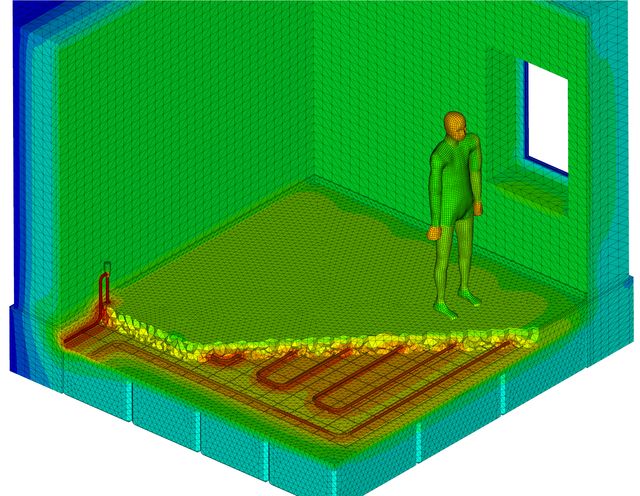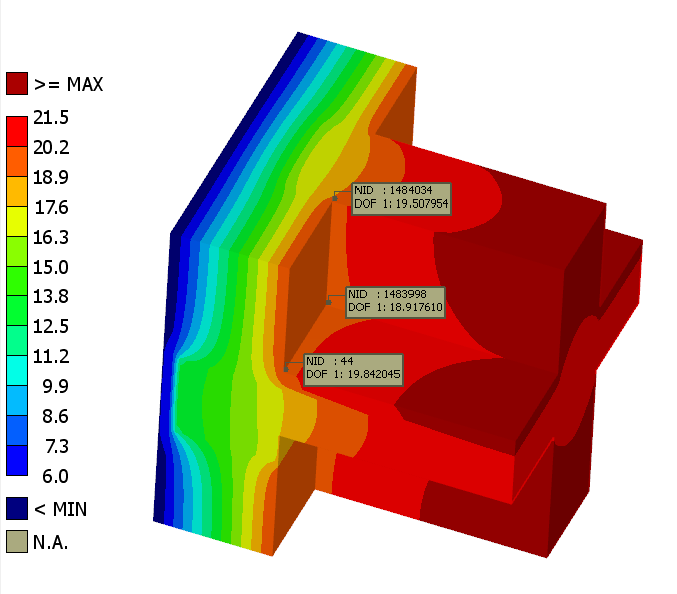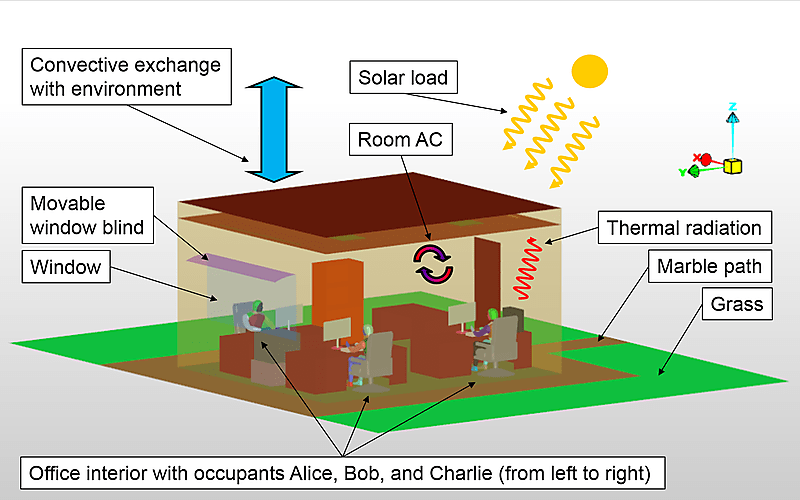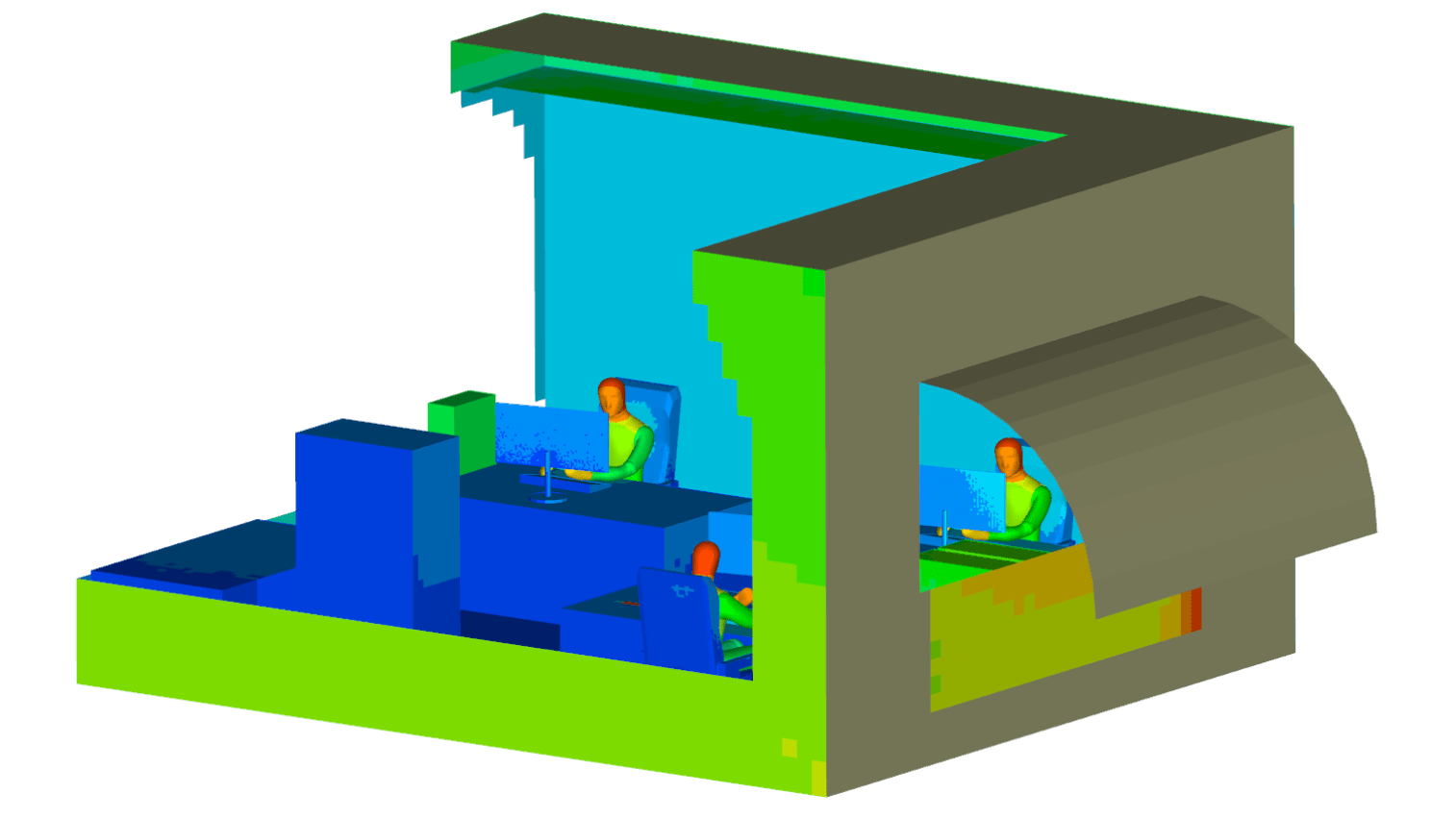THESEUS‑FE for thermal design of buildings

THESEUS‑FE is capable of modelling any thermal loads on buildings and individual rooms. This encompasses solar radiation, underfloor heating, human body metabolism or any other source of heat.
Whether you are just choosing the proper materials as a concept study, doing a concrete analysis of a given building during its planning phase, or preparing for old-building renovation - THESEUS‑FE is a valuable addition in your software arsenal. Results for the thermal conditions within living rooms, offices space or entire buildings can aid in evaluating different techniques for increasing occupant thermal comfort while keeping the energy costs at a minimum.

Some exemplary problems which can be solved using THESEUS‑FE are:
- Locating thermal bridges (e.g. at windows, walls and heating pipes)
- Dimensioning of heating systems regarding their maximum power (worst case scenario of cold winter day)
- Rating of underfloor heating systems regarding achieved floor temperatures and human local comfort sensation
- Comparison of different window glass panes or conceptual window systems regarding their energy efficiency for typical summer and winter load cases
- Cost-benefit analysis of heat cost reduction potential versus building material costs
- Revealing locations at risk of moisture condensation in corners or behind closets
Case Study: Thermal comfort of office workers

In this study we will consider a building AC scenario for an office container under sunny summer conditions.
We will study the effect of closing window blinds on the thermal comfort of three employees as well as the AC power consumption.
This relatively simple and intuitive case serves to demonstrate the practical use of our thermal simulation software package THESEUS‑FE and the pre-processing software ANSA for creating optimization studies.
The figure shows an overview of the relevant physics that determine the thermal behaviour of the office room system.
We will model hypothetical environmental conditions corresponding to the date June 10th, 2015 for the location of Thessaloniki, Greece.
The simulation will run from 09:00 to 18:00 local time.
During this period the location of the sun will follow the true trajectory as observed on the ground, meaning that the direction of the direct solar beam radiation will change over time.
In the afternoon hours significant levels of solar radiation will penetrate into the office container through the window on the west side.
A movable window blind can be used to block the direct radiation.
The room is also equipped with an air conditioning system to control temperature and humidity inside.
The thermal solver THESEUS‑FE considers all relevant thermal effects for predicting the temperature over the course of the day:
- dynamic solar loads, short-wave transmission, reflection, and absorption
- thermal surface-to-surface radiation
- heat output from the personal computers used by the staff
- heat conduction through all solid parts
- simplified convective heat transfer between solid parts and air volumes
- effects of the air conditioning on the air inside the office
- full thermophysiological interaction of the virtual human thermal models for Alice, Bob, and Charlie with the air in the office
THESEUS‑FE uses standard Nastran shell and solid elements for a simple discretization of the office components.
Air volumes are modelled as thermodynamic reservoirs with a given volume and two degrees of freedom for the average temperature and humidity respectively.
The human physiology model FIALA-FE used in THESEUS‑FE is based on the well-known and established Fiala model.
THESEUS‑FE is capable of computing local and global measures of thermal comfort such as equivalent temperatures, Berkeley thermal sensation and comfort, or Predicted Mean Vote (PMV).
In this study we will use PMV values reported by Alice, Bob, and Charlie as a simple global measure of comfort.

Related publications available as free download
Skalen-adaptive Simulation thermischer Behaglichkeit in Innenräumen
[german, 1.1 MB]
C. van Treeck, J. Frisch, S. R. Bolineni, S. Stratbücker, S. Paulke, I. Schweinfurth, R. Schwab, E. Rank, A. Holm
Fraunhofer IBP, TU Munich, P+Z Engineering
BauSim 2010 | September 22-24, 2010 | Vienna, Austria
Thermal Simulations with THESEUS-FE and ANSA: Optimizing Thermal Comfort in an Office Building Environment
[english, 1.3 MB]
D. Köster
P+Z Engineering
6th BETA-CAE International Conference | June 10-12, 2015 | Thessaloniki, Greece




